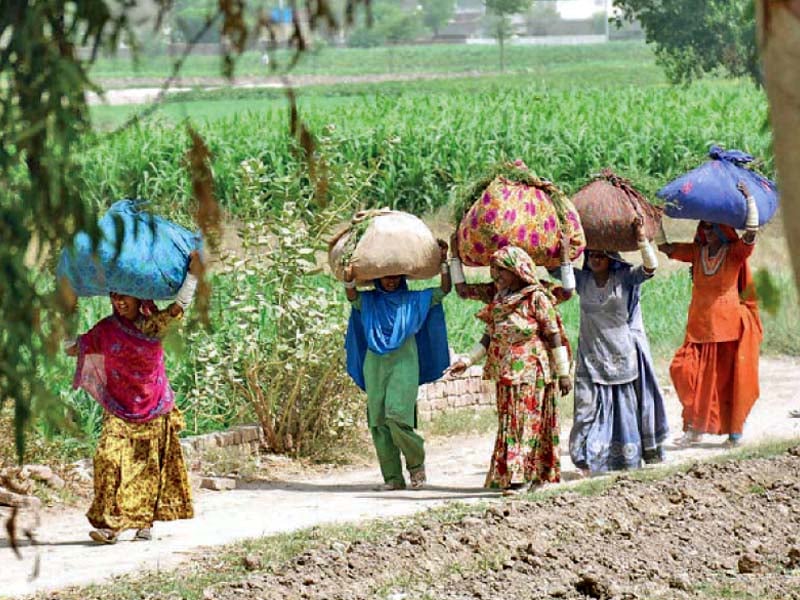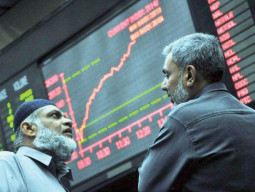
The key reason behind the increase in household income appeared to be consolidation of development activities in Punjab, which had been governed by the Pakistan Muslim League-Nawaz - the ruling party in the Centre at that time.
Pakistan Bureau of Statistics (PBS) on Monday released findings of the Household Integrated Economic Survey (HIES) 2018-19. The survey compared social and economic indicators across the provinces with results of the HIES 2015-16.
The work on survey began towards the end of last political governments but field activities were carried out from August 2018 to June 2019.
The average monthly household income in Punjab increased to Rs42,861, higher by Rs6,631 or 18.3% as compared to the results of 2015-16, according to the HIES 2019.
It was also the highest average household income among all provinces, a distinction that was with K-P in 2015-16.
The average household income in K-P stood at Rs42,736, up Rs4,383 or 11.4%, showed the survey.
However, in Sindh, the average household income stood at Rs39,078, higher by Rs5,130 or 15.1% over three years ago.
Meanwhile, in Balochistan, the average household income increased by Rs6,346 or 21.2% to Rs36,387, according to the new survey.
The increase in average income was the slowest in K-P among all provinces. Punjab and Balochistan were the two main provinces where income increased significantly both in absolute terms and in percentages.
The most populated province - Punjab - was the main beneficiary of the China-Pakistan Economic Corridor (CPEC) and other mega development initiatives, followed by Balochistan.
Politicians belonging to Sindh and K-P had protested against the uneven distribution of development funds during the 2013-18 tenures of assemblies.
Findings of the survey also depict mixed social and economic results. The literacy rate in Pakistan increased by two percentage points to 60% and the infant mortality rate went down between the period of the two surveys.
The review showed that economic disparity between the lowest income group and the highest income group fell marginally.
Survey stats
According to the survey, average monthly household expenditure in 2018-19 stood at Rs37,159, up by Rs4,581 or 14% compared to 2015-16.
This figure is used to assess the overall welfare of people. The pace of increase in expenditure in all income groups was lower than the previous survey year, showing positive impact of low global inflationary environment.
However, the expenditure by the richest income group was 267% higher than the lowest income group, indicating disparity in living standards due to income levels.
Average monthly income stood at Rs41,545 in 2019, higher by 13.6% or Rs4,883 over the 2016 period. The growth in income was slightly less than the growth in expenditure, which suggested that people hardly met their expenses from their income.
The income of the richest was 273% more than the income of the poorest.
Expenditure disparity
The increase in expenditure seems to be across the board as the expenditure for all income quintiles increased in the range of 10% to nearly 19% - but the pace of increase was less than in previous years.
There was usual disparity between the lowest quintile and the highest one - the highest income group spent Rs58,206 per month, which was 168% more than the spending by the lowest income group that amounted to Rs21,726.
The poorest income group’s spending increased only Rs3,230 per month in the last two years. The second-lowest quintile’s average monthly expenditure amounted to Rs27,138, higher by Rs4,264 or 18.6% over the last surveyed year.
Meanwhile, the third quintile, comprising the middle-income group, had average monthly expenses of Rs30,475, higher by Rs3,770 or 14.1%.
Moreover, the higher middle-income group’s expenditure grew to Rs36,338, up by Rs5,001 or 16% more than the previous surveyed year.
Monthly income disparity
The monthly income of all quintiles increased in the range of 5% to 22% and the major surge was recorded in the income of the lowest two quintiles, which appeared to be beneficiaries of the government’s economic policies.
The lowest quintile’s average monthly income stood at Rs23,192, higher by Rs3,450 or 17.5% and sufficient to finance the expenses.
The second-lowest quintile’s income stood at Rs29,049, which was 22% or Rs5,223 more than the previous year’s income and also higher than the pace of increase in expenses.
The middle-income group saw a 12% increase in its income to Rs31,373. The higher middle-income group’s average monthly income increased to Rs37,643, showing 11.8% growth.
The average monthly income of the highest income group was estimated at Rs63,544, higher by 5.1%, still short of matching the growth in expenses.
Published in The Express Tribune, April 21st, 2020.
Like Business on Facebook, follow @TribuneBiz on Twitter to stay informed and join in the conversation.



1730959638-0/trump-(19)1730959638-0-165x106.webp)













COMMENTS
Comments are moderated and generally will be posted if they are on-topic and not abusive.
For more information, please see our Comments FAQ